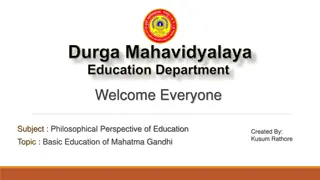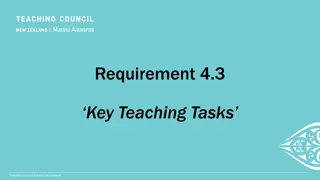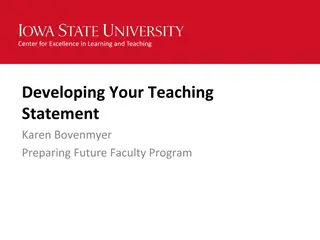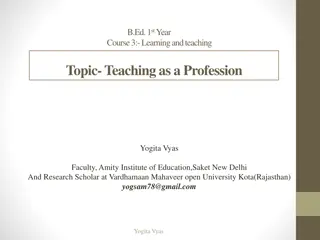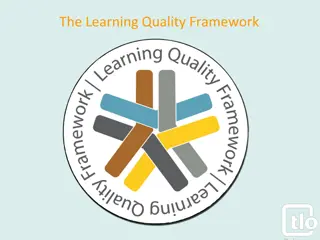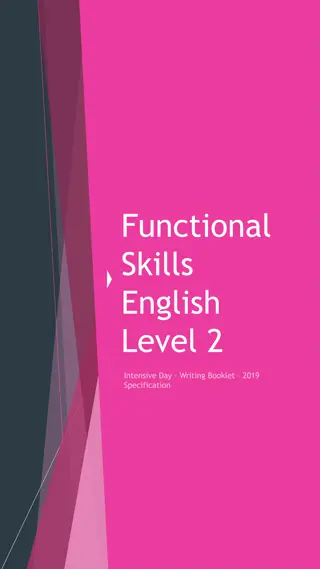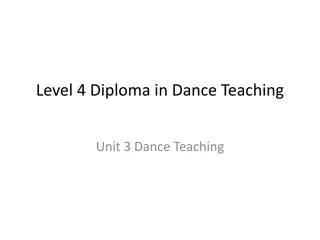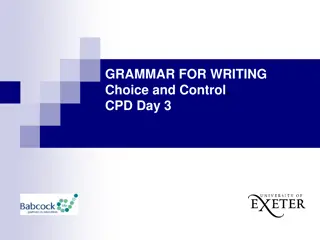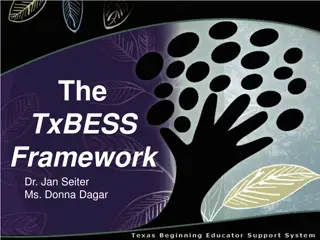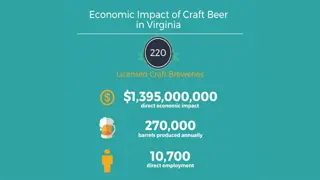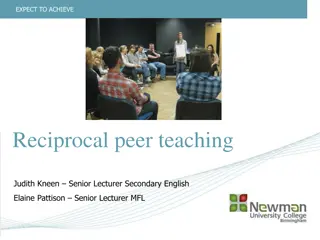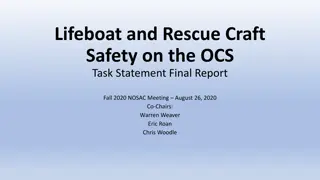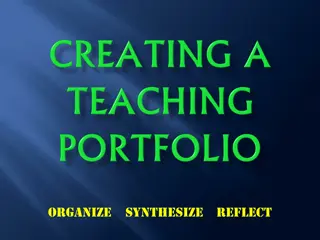Craft of Writing Framework for Teaching Writing
Explore the Craft of Writing Framework to enhance your teaching of writing skills, transforming your Arvon residential experiences into effective classroom strategies. Embrace language choices, text-level decisions, authorship, writing processes, and reader-writer relationships to empower students in their writing journey. Reflect on Gap Tasks to bridge theory and practice seamlessly.
Download Presentation

Please find below an Image/Link to download the presentation.
The content on the website is provided AS IS for your information and personal use only. It may not be sold, licensed, or shared on other websites without obtaining consent from the author. Download presentation by click this link. If you encounter any issues during the download, it is possible that the publisher has removed the file from their server.
E N D
Presentation Transcript
CPD Day 2: Welcome! All art is achieved through the exercise of a craft, and every craft has its rudiments that must be taught. Fairfax and Moat (1998) 1
From Arvon to the Classroom A key goal for this project is to help you as teachers transfer what you have learned/will learn from the Arvon residentials into your classrooms, particularly in relation to: How you see yourself as a writer and how you help children to see themselves as writers; How you adapt what you learn at Arvon to be effective in your own classrooms; How you combine the Arvon learning with the demands of the curriculum. Anthology of Writing Residential 2: Celebrating you as writers! 2
Today 10.00-10.30 Introduction and Reflection on Gap Task 10.30-10.45 Facing up to Feedback! 10.45-11.15 Craft of Writing Framework: Text Level Choices 11.15 Coffee 11.30-12.30 Another Taste of Arvon 12.30-13.00 Craft of Writing Framework: Reader-Writer relationship 13.00 Lunch 13.45-14.30 Learning from Children s Writing 14.30-15.00 From Arvon to the Classroom 15.00-15.30 Plenary 3
How are you using this to inform your teaching of writing? The Craft of Writing Framework Language Choices Text-Level choices Being an author Writing process Reader-writer relationship 4
Gap Task 2 This Gap Task is to help you build on both the June Arvon Residential experience and the September CPD day and to actively use what you are learning in your own classrooms. We would like you to continue using the strategies and ideas you have already been exploring, but also to: continue to use the Just Write (freewriting) approach, but experiment with not always using it at the start of writing; it can be used as a piece of writing is developing to explore a particular aspect eg just write about what this character is going to do next; or just write about this moment in the plot; think about how to incorporate what you have learnt about the craft of writing into your teaching of writing, with a particular focus this time on the writing process, being an author, and making language choices; create A3 representations which show the journey/process of a piece of writing from initial ideas to finished piece for three children, and for yourself (4 in total). Choose three children of differing abilities, and represent less successful journeys as well as successful ones. You might annotate the journeys with categories from the craft framework. Bring these to CPD Day 2. 6
Gap Task 2: Reflection From Arvon to the classroom How have you used freewriting at different points in the process of writing, rather than just as an initial idea generation strategy? How have you incorporated what you have learnt about the craft of writing into your teaching of writing, with a particular focus this time on the writing process, being an author, and making language choices; In groups, share your reflections on what you have done and the challenges or successes of this. Your writing journey: share your A3 representation of your writing journey with a partner, talking through both what you did and how you see yourself as a writer. 7
Giving Critical Feedback Teachers are often reluctant to give feedback, other than bland praise, to children s creative writing (especially poetry); Creative writing is put on a pedestal, where it can t be touched; We give lots of feedback to other kinds of writing in the curriculum; But writers need feedback on their creative work too, and this is crucially important for developing writers. Why is there such reluctance to give feedback on creative writing? 9
Creativity is not simply a matter of letting go: rather genuine creative work relies on knowledge, control of materials and command of ideas and involves not just innovation, but also knowledge and skills. National Advisory Committee on Creative and Cultural Education (NACCCE, 1999: 6) Why is writing so tricky? Because it requires mastery of two conflicting skills: a creative skill and a critical skill. The former is of the imagination, the latter of the intellect, and they come from different brain hemispheres. To write well, we have to employ both to maximum effect. Tim Bowler (2002) 10
Giving Critical Feedback Feedback develops children s critical capacities their understanding of how to discuss and improve their own writing; It is hard to revise writing if you have no real sense of how to judge what you have written, or how to change what you have written; The Arvon residentials create rich creative spaces for writing, but the tutorials offer space for constructive and critical feedback; Critical feedback generates a shared vocabulary and language to talk about writing; Critical feedback demands subject knowledge of the craft of writing. The Craft of Writing Framework: a shared way of thinking about writing. 11
THE CRAFT OF WRITING FRAMEWORK TEXT-LEVEL CHOICES 12
TEXT LEVEL CHOICES Knowledge about structural and text-level features and their effects TEXT LEVEL CHOICES 13
TEXT LEVEL CHOICES Knowledge about structural and text-level features and their effects Poetic Structures Dialogue and tone Viewpoint TEXT LEVEL CHOICES Narrative Structure Characterisation Show, not Tell 14
Giving Feedback: Text-Level Choices What critical feedback might you give to Nicola Davies on her Text Level Choices in King of the Sky? Look especially at: Narrative structure Repetition Viewpoint Remember that critical feedback is not negative: it focuses as much on what has been successful as on what needs improvement. But it verbalises why something is successful or less so? 15
Giving Feedback: Text-Level Choices How does better understanding of Text level choices support feedback and revision? 16
THE CRAFT OF WRITING FRAMEWORK READER-WRITER RELATIONSHIP 18
READER WRITER RELATIONSHIP Knowledge about the interaction between reader, writer, and the ways in which readers become engaged in or affected by writing READER WRITER RELATIONSHIP 19
READER WRITER RELATIONSHIP Knowledge about the interaction between reader, writer, and the ways in which readers become engaged in or affected by writing Affecting the Reader Helping the Reader READER WRITER RELATIONSHIP Engaging the Reader Reader Writer Interaction 20
Category Helping the reader understand Explanation Strategies to ensure the reader is able to follow the text Example It s always about taking the simple way of getting to your reader Engaging the reader Strategies to involve the reader and keeping them in the moment Make the reader feel like they re there Affecting the reader Strategies to influence readers feelings What is it you want your reader to feel when they close the book Reader-writer interaction Comments about the collaboration between reader and writer The reader is as much a part of your piece of writing as you, the writer 21
Reader-writer interaction We authors think of our books not as monologues, but rather as the openings of conversations: conversations between authors and readers, between characters and readers, between readers and other readers, and between readers and their communities . Sara Pennypacker 22
If I can't hook a reader right away, I don't have a job, so I've spent a lot of time thinking about how to do it . 23
Engaging the reader Children read for pretty much the same reasons adults read, [so I try to offer..] 1. Pleasure (which can include safely experiencing terror or regret or grief, not just laughter or fun) Curiosity - humans are wired to want to know what happens next! Self-understanding - People read to find out who they are, and who they could be. Connection with others - We humans are pack animals, and having successful relationships is high on our priority list. Books that show people forming friendships, working through diffs, finding common ground or exploring new experiences together are extremely attractive to kids as they grow. Information - Children are born into small worlds which expand rapidly - family, neighbors, school, and beyond. They value books which help them understand how the world works. 2. 3. 4. 5. Sara Pennypacker 25
Affecting the reader I ll say to writers what is it that you want your reader to feel when they close the book or they finish the poem. What s that feeling that you re looking for? Steve Voake I ll be kind of ruthless and say right that needs to go, I don t need that, I needed it to tell me what was going on, but now I know the reader doesn t necessarily need it. Usually as an author you end up needing to know far more than the reader does. Steve Voake 26
Helping the reader understand Image result for alicia stubbersfield we want to know is what s happening. We don t want to know the whole story because we want to be able to fill it in for ourselves a bit. Related image Related image You know you have to leave room for the reader. Alicia Stubbersfield
Reader-writer relationships How does better understanding of the reader-writer relationship support feedback and revision? 28
LEARNING FROM CHILDRENS WRITING 29
Student Writing Journeys In threes: share one of the student writing journeys represented on A3, including giving a little vignette about the writer (context). What are the writing journeys telling you about each child as a writer; and about how you teach writing? Use the writing journey from each teacher and together decide what feedback you might give the writer, and what prompts for revision you might offer? Use the Craft of Writing Framework as a guide. 30
FROM ARVON TO THE CLASSROOM: FEEDBACK 31
Offering Feedback to each other In pairs, share one piece of writing from the Arvon Residential: read it aloud to each other. Allow yourselves 5 minutes for each of you as the reader to consider what feedback to give, using the Craft Framework, and write these down. In turn, offer your partner constructive focused peer feedback related to the Craft Framework Each time, the writer needs to consider what revision s/he might do now and share these. 32
Pedagogical Principles These principles have been developed by drawing on both the values underpinning Arvon and research about what makes effective teaching of writing: Create inclusive classrooms where children are given time and space to write, opportunities to write without being assessed, and to take risks and be experimental; Offer inspiring opportunities and starting points for writing, including writing from the heart and writing from experience so that children experience being an author; Support young writers in understanding and managing the writing process and being aware of the reader-writer relationship; Explicitly teach the language and textual choices students can make in their writing; Create a community of writers where writing is shared, critiqued and celebrated, where feedback is purposeful. 34
Gap Task 3: Part 1 We would like you to: Commit at least one session a week to developing your Seasonal Short Story Collection with your class using the pedagogical principles and Craft of Writing framework. Keep a diary in your journal, (at least 6 full reflections) reflecting on the journey you took to produce your class publication. Reflect on how you managed and how the class responded to different elements of the journey: Free writing time - to explore ideas for their seasonal story as authors; The teaching of elements of the Craft of Writing Framework - especially text level choices and language choices; The writing process - reviewing and revising time, and offering focused feedback; Reader writer relationship - writing for an audience; The final outcome - publishing or performing within your community of writers. 36
Gap Task 3: Part 2 2. Choose three children of differing abilities and with different relationships to writing. Reflect on how they each responded to these elements of the journey in your diary. 3. Write a concluding reflection about: what worked well and why where the challenges were and why how you plan to build on all these elements of writing in your everyday teaching in the Spring Term January 2018 prior to Arvon residential 4. Look at your medium term plans for the Spring term and start to plan a unit of work. If time allows before the Residential, deliver your short unit of work. Consider how you can embed the elements of the Craft of Writing Framework and pedagogical principles into your plan. What elements are easier to fit in? Equally, what are the challenges you will want to circumnavigate? 37
Project Website http://socialsciences.exeter.ac.uk/education/research/centres/c entreforresearchinwriting/projects/craftofwriting/ Resources for Intervention Teachers Username: Arvon Password: TedHughes 38
We meet again! Residential 2: Jan 11-13th Lumb Bank CPD Day 3: May 8th 2019 39
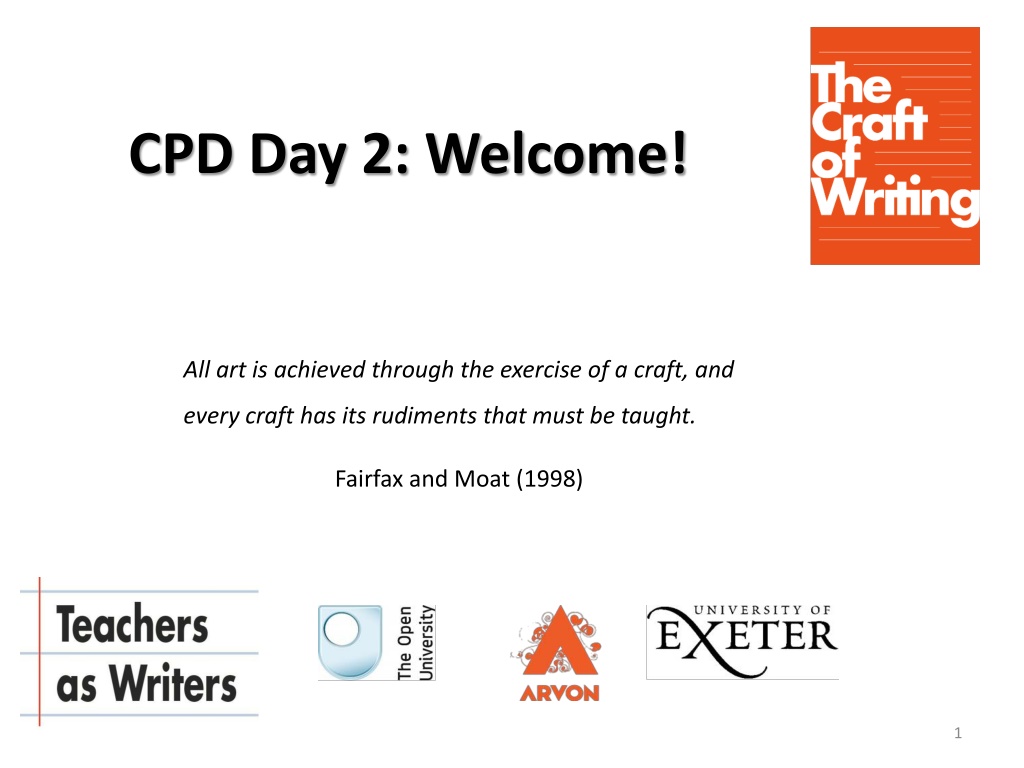

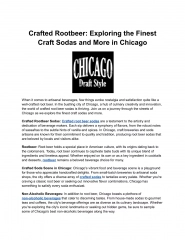
![❤[READ]❤ Deep Space Craft: An Overview of Interplanetary Flight (Springer Praxis](/thumb/21511/read-deep-space-craft-an-overview-of-interplanetary-flight-springer-praxis.jpg)

